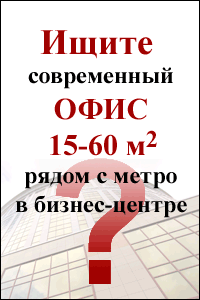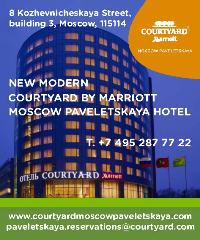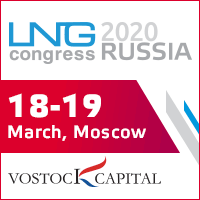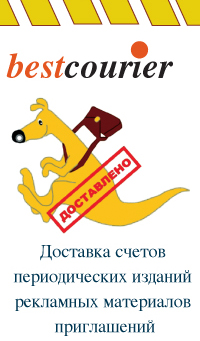The pluses and minuses of Moscow’s expansion at the expense of Moscow Region

The Moscow expansion idea was first announced by President Dmitry Medvedev in June 2011 at the St. Petersburg International Economical Forum. Later, this idea was publicly supported by Prime Minister Vladimir Putin, calling the decision to expand the Russian capital’s boundaries at the expense of parts of the Moscow Region’s territories a long overdue step. “Moscow, as everyone knows, is suffocating in its current borders. Therefore, this long overdue decision to expand the city’s boundaries will provide it with new opportunities for a faster rate of development.”
Moscow Mayor Sergei Sobyanin and Moscow Region Gov. Boris Gromov presented their detailed proposals and visions on how to achieve the stated objective, according to which the total area of the capital will increase approximately 2.5 times, from the current 109,100 hectares to 253,100 hectares, or an increase of 144,000 hectares.
Besides, about 60mln sqm of new residential properties and almost 45mln of commercial real-estate assets will also be built in the enlarged capital. “The president has basically agreed to our proposals,” Sobyanin told reporters on returning from the Kremlin, where he and Gromov had presented their proposals to the president. “The design of the new districts of Moscow, which will appear after expanding the boundaries, will require a minimum of one year and the overall cost of the project has yet to be defined.”
“The Moscow expansion policy will increase the city’s territory approximately 2.5 times, from its current landmass area of 109,100 hectares to 253,100 hectares, or by 144,000 hectares.”
Having received political blessings from the Kremlin and the Russian White House, Sobyanin and Gromov in late June signed the long-awaited agreement on the new borders between two Subjects of the Russian Federation, an accord that the Moscow city and Moscow Region authorities could not sign for decades under the rule of ex-Mayor Moscow, Yuri Luzhkov.
Moscow expansion’s goals and probable consequences
According to Medvedev, the project will ‘significantly improve the development of Moscow and Moscow Region, and thus making their residents’ lives easier and better’ after the realization of the policy. The expansion of the capital’s borders is an economically beneficial decision, which, according to Sobyanin, ‘will attract huge investments to the city and create lots of new jobs.’ One of the consequences of investors and apartment buyers’ huge interest in the project will be a significant hike in prices of real estate properties located in areas that will become a part of the newly created FCD and a possible decrease in prices of residential real estate properties in the capital itself as a result of the appearance of new competing territories.
According to real-estate experts, the prices on real-estate properties in the Moscow Region, on the other hand, are expected to increase approximately by 20%-25%. For instance, with the current average price of 72,603 rubles per sqm, the price of a 2-room, 54sqm apartment in Podolks on the secondary market is expected to increase from 3,92mln rubles to 4,70mln rubles. Expectedly, this new reality will ignite increased activities on both the capital and Moscow Region real-estate markets. “The near Moscow Region real-estate market will face cutthroat competition, while the victorious areas will be well-planned micro-regions with developed transport and social infrastructure,” NDV-Realty CEO Alexander Khrustalyov noted.
Residents of the Moscow Region that will become a part of the extended Russian capital are to expect several pleasant surprises: acquisition of subsidies on utility services bills, a privilege that they were deprived of in the region, an increase in salaries for public servants, a raise in pensions and other social benefits, etc. According to the City Hall’s Social Security Department, the minimum amount of pension in the capital is, effective from 2011, 11,300 rubles, compared to just 4,390 rubles for pensioners in the Moscow Region. “We are not only going to keep the present social policy standards in the capital, but improve them annually, and this includes the handicapped. This is because one of our basic programs is the provision of social support to Muscovites,” Sobyanin added.
The issue of coveted Moscow registration, proximity to the Metro and better social environs are some of the key factors that will definitely affect prices of real-estate assets, goods and services in the extended capital and the outlying regions. For instance, the costs of housing in Moscow, according to the mayor, will decrease because the expansion of the city’s borders will offer multiple opportunities for building new residential properties. However, the costs of housing in the Moscow Region are expected to increase, a phenomenon, which NDV-Realty Deputy CEO Olga Novikova has attributed to “the development of new transportation infrastructure, notably, the extension of Moscow’s Metro lines to the region, as well as the construction of the so-called ‘light Metro and new road networks.”
The expansion of the capital’s borders is seen as one of the ways of solving “the perennial traffic jam issue” in the city. According to a recent rating compiled in Britain, Moscow was ranked among the top ten world’s capitals with ‘the most horrible traffic jams.’ The city’s mayor seems to have agreed with this assessment, as he has called the current frequent traffic jams in Moscow an evidence of ‘a total collapse’ of the city’s transportation system and urban planning strategies. “This is evident in the fact that two-thirds of our jobs are located in the city center, while two-thirds of housings are located on the outskirts. Consequently, every day millions of people move to and from the city center to the outskirts, a practice that puts an extreme stress on the city’s existing transportation infrastructure.”
Consequently, the mayor now wants to change the existing so-called unicentric urban development model, where all city’s roads lead to one center, for a polycentric urban model, where roads go in different directions. This proposal has already got secured the support of some of the nation’s top urban planners. “The major reason of traffic jams in Moscow is the radial-and-ring development model of the city,” Mikhail Blinkin, the director of the city’s traffic and urban planning agency, noted. “In the mornings, everyone goes to the center, while in the evenings everyone goes away from it. This needs to be changed. If, at least, government officials are relocated beyond the MKAD, the traffic situation will improve significantly.”
The new federal capital district
Russia was first divided into seven new federal administrative districts in 2000 in analogy to the partition of the country into various economic and military regions, though the delineations differ by the composition and quantitative criteria used for the partition. Thus, according to the 2000 delineation, Moscow and Moscow Region were included in the Central Federal District, which also serves as the nation’s financial and economic center.
However, according to experts, it seems the 2000 delineation has now become obsolete. “Moscow, in its current position, no longer meets the key requirements expected from a modern capital city,” Mosproject CEO Svyatoslav Mindrul noted. “Besides, Moscow and Moscow Region have practically long merged together not just economically, but also territorially,” he added. “Therefore, the idea of changing the structure of the capital is, honestly speaking, right. Relocation of parts of city’s functions to different zones will decrease the pressure on the center.”
The first step towards the creation of CFD will be distribution of lands and delineation of the borders between the capital and Moscow Region. The major changes in the borders delineation process will be along the MKAD perimeters. Realization of this plan will start at the Lyuberesy area, where the government has long planned to build 5mln sqm of real estate properties. According to the resolution approved on June 6 by the Moscow City Duma (the city’s parliament), titled, “The Approval of the Agreement to change the boundaries of Moscow and Moscow Region,” Moscow Region will cede 578 hectares of land in the Lyuberesy district to the capital.
The cost of executing the plan
In all, a total of 130 areas will be affected by the project. Of this, 29 areas will join Moscow, while 59 will move from the capital to Moscow Region, according to Moscow City Duma’s whitepaper. However, despite these relocations of territories, this project does not envisage a practical merger of the capital with Moscow Region. The planned development of new urban infrastructure and other social facilities in Moscow Region will not become an additional tax burden on Moscow residents.
The expansion is seen as a way of solving the perennial traffic problems in the city, as it envisages changing the current unicentric urban development model where roads lead to the city center for a polycentric model, where roads go in all directions.
According to official estimates, the whole project is expected to cost several billions of dollars, with the main sources of financing being the federal government and regional budgets. Expanding further on the funding issue, Russia’s Finance Minister Alexei Kudrin specifically noted that the planned relocation of state institutions beyond the MKAD will not lead to additional spending by the government. “We ought to effectively use the buildings being evacuated in the city center, as well as the other properties and assets that our government currently has in downtown Moscow in a way that in the long-term perspective will lead to the nullification of the costs of relocation to the outskirts.”
Moscow mayor is upbeat about the positive results of this expansion policy, as it will open up new opportunities for the city’s to maximize its capital’s functions and potential. “The development of the new territories that will become parts of the capital will in the future determine the city’s new economic potential, and this will increase our revenues,” he added. “Besides, thanks to the reduction in the population density by almost half, there will be significant improvement in the ecological situation in the capital, which will create better living environment for Muscovites, as it will be a lot much easier to breathe in the city.”
"The expansion of the capital’s borders will improve the transportation networks system, and this, in turn, will lead to a significant ‘decongestion of the most stressed points’ in the system. For instance, within the frameworks of this expansion policy, an extension of the Moscow Metro lines, two train stations and a high-speed tram system are to be built in Skolkovo, the new citadel of Russia’s technological innovations just outside the capital city."
Similarly, Governor Gromov also sees only benefits in expanding Moscow’s boundaries to his region, especially for its economy as the policy will attract investors’ attention to the areas that will be adjacent to the capital’s new territories. “Investors are looking at this with a great interest and readiness to invest in these areas,” he added. “Besides, representations of the federal government and ministries will be set up in these areas. Therefore, residents of my region will no longer have to travel to Moscow in search of jobs, as new business facilities and other urban infrastructure will be constructed here, thus creating thousands of new jobs. In short, this project will open up great prospects for the enlarged capital and Moscow Region.”
The enlarged Russian capital promises to be ‘an architectural wonder’ as the world’s leading experts in construction, urban engineering, design and infrastructure developments will be involved in the realization of the project. “The creation of the new CFD will lay a strong foundation for the next step in Russia’s breakthrough to the Olympus of the global economy, notably, the creation of the Moscow Financial Center, which will become “not just a center of our country’s financial system, but also a catalyst for accelerated development of the financial markets in the whole post-Soviet region,” President Medvedev added.
Strong opposition to the expansion policy
This project, however, has a sufficiently large number of opponents, according to the results of so-called ‘people’s referendum’ held at the end of summer by the Just Russia party to gauge the Moscow residents’ views on adding parts of the Moscow Region to their city. Specifically, almost 3,000 respondents took part in the survey, out of which 1,025 people were in favor of th expansion policy, while 1,842 people were against it. “By this action, we wanted to show that it is necessary to consider people’s opinions on key issues before making hasty decisions,” said Alexander Ageyev, the chairman of Just Russia party’s Moscow branch, said, promising to send the results of the ‘people’s referendum’ together with the ballot papers to Moscow mayor.
But a more representative survey conducted in summer by the Levada Poll Center among 500 Muscovites, aged 18 and above, showed that the positions of the city’s residents are split equally on the policy, with 41% of respondents both for and against the policy, while 18% of respondents are still undecided. But the 41% against is sufficiently high a figure to warrant policy rethink among the expansion strategists.
All these controversial social trends have made opposition political leaders to call on the Kremlin and Moscow Mayor's Office to conduct an official referendum on the issue. “A referendum is definitely required before the official implementation of this policy, as it directly affects almost 10% of our country’s population resident in the capital,” Mikhail Prokhorov, the former leader of Right Cause party, noted. 
The expansion plan also has its disadvantages
Despite the multiple positive advantages of the capital’s expansion project and hopes of the interested individuals, skeptics, however, believe that planned changes are not fully realistic due, first and foremost, to the fact that they will exacerbate the existing instability in the national economy, which has been already deeply weakened by the current crisis. One of the key problematic issues on the path of the project’s execution will be the acquisition of lands from their present owners. Thus, according to some experts’ most conservative estimates, the government will need about $10bln to legally secure these plots of land to erect buildings to accommodate state agencies alone, a figure that will certainly put a dent on its financial resources. Besides, the opponents of the project also believe that Moscow expansion will not improve the current transportation situation, but only serve to fuel internal migration of citizens to the capital, and consequently, lead to an unprecedented level of mass unemployment in the enlarged capital.
Also, the owners of summer countryside homes, more popularly known as the dachas, will certainly fall victims to this expansion policy as their properties might be on areas needed for real-estate and urban facility developments, while those that are spared of this ordeal will find their hitherto peaceful and quiet environments shattered by noises from the newly-built highways, office centers and other modern urban infrastructural facilities that will spring up on these locations in the near future. “For the suburban dacha residents, what is store for them at the moment is an open question, as it seems that nobody has exactly estimated the real scale of the financial aspect of this expansion policy with regard to the dachas and their owners,” GEO Development CEO Maxim Leshev noted. “Currently, the areas occupied by dachas on the path of Moscow expansion have been estimated at between 2,000 hectares and 3,000 hectares. At the current market price of $4,000-$8,000 per hundredth of hectare, this means the government will have to spend over $2bln just to get only the dacha land plots from their owners.”
However, taking into consideration the present situation, it is not difficult to understand that Moscow does not really have other better options, as the city’s population has more than doubled over the past 50 years, while its area has only increased by just 1.2 times, thus causing a massive disbalance in everything. Therefore, Moscow needs an urgent solution to the obvious disequilibrium in the distribution of its resources, and one can only hope that villages and forests will not fall helpless victims to the expected consequences of these upcoming major changes.
This text was edited and proofed by Alex Freedmann.












 Web design,
Web design,